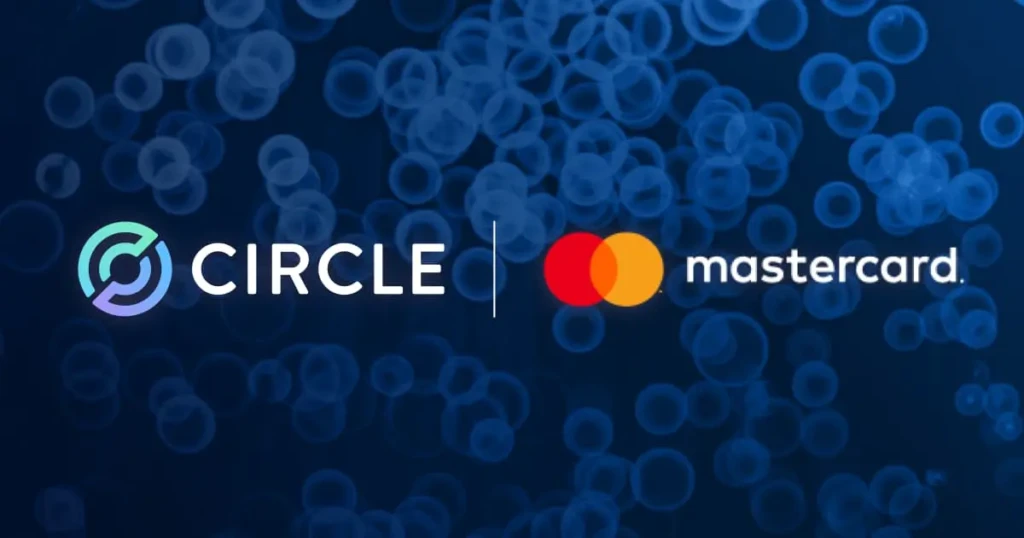Mastercard Circle Stablecoin Partnership: A Turning Point in Payments
The Mastercard Circle stablecoin partnership marks a pivotal step in the integration of digital assets into the global financial system. On August 26, Mastercard announced its collaboration with Circle to enable USDC and EURC settlements for acquiring banks across Eastern Europe, the Middle East, and Africa (EEMEA).
This development allows merchants connected to Mastercard’s payment network to accept and settle transactions in stablecoins, bypassing many of the inefficiencies of legacy payment systems. The move comes as stablecoins gain momentum worldwide, offering instant transfers, reduced fees, and programmability compared to traditional payment rails.
Why Mastercard Is Betting Big on Stablecoins
Mastercard has long positioned itself as a bridge between traditional finance and the digital asset economy. By embracing Circle’s USDC and EURC, the company aims to capture growing demand for faster, cheaper, and programmable money flows.
Dimitrios Dosis, Mastercard’s President of Eastern Europe, Middle East, and Africa, described the initiative as a “strategic goal to integrate stablecoins into the financial mainstream.” His statement highlights Mastercard’s ambition to invest in the infrastructure, governance, and partnerships required to transform stablecoins from niche assets into widely used payment instruments.
What the Partnership Means for Merchants and Banks
At the core of the Mastercard Circle stablecoin partnership are acquiring banks—the intermediaries that connect merchants to Mastercard’s network. With the integration of USDC and EURC, these banks can now settle payments instantly, removing delays tied to traditional clearing systems.
For merchants, this shift translates to:
- Faster access to funds compared to legacy settlement cycles.
- Lower transaction costs, especially for cross-border payments.
- Programmable payments, enabling businesses to automate payrolls, supplier payments, or conditional settlements.
This efficiency could significantly reshape payment infrastructure in regions where banking systems are fragmented or costly, particularly across Africa and Eastern Europe.
Circle’s Push for Global Stablecoin Adoption
Circle, the issuer of USDC and EURC, has been at the forefront of stablecoin development. Its Chief Business Officer, Kash Razzaghi, emphasized that the Mastercard collaboration “enables wider reach, global access, and scaled impact, so that USDC can become as ubiquitous as traditional payments.”
The company envisions a world where stablecoins underpin everyday financial activities, from retail shopping to cross-border remittances. This partnership with Mastercard is one of its boldest moves yet to cement that vision.
Learn more about USDC from Circle
Regulatory Context: Post-GENIUS Act
The partnership also aligns with shifting regulatory winds. Following the passage of the U.S. GENIUS Act, which set clearer rules for stablecoin issuance and governance, Mastercard has doubled down on its involvement in the space.
Earlier in July, the company publicly praised stablecoins for their ability to enhance cross-border transactions, calling them “a fast and low-cost alternative to traditional banking.” With regulatory clarity improving, Mastercard now appears intent on leveraging its global influence to help mainstream stablecoin payments.
Stablecoins vs. Legacy Payment Rails
The rise of stablecoins poses a direct challenge to established card networks. While Mastercard and Visa dominate traditional payments, stablecoins processed over $10 trillion in transactions in 2024—surpassing volumes on both networks combined, according to ARK Invest.
Unlike credit card settlements, which often take days and involve multiple intermediaries, stablecoin transactions are:
- Instant: Transfers settle in seconds.
- Transparent: Every transaction is recorded on-chain.
- Lower-cost: Reduced reliance on costly correspondent banking systems.
By embracing stablecoins rather than resisting them, Mastercard appears to be flipping its playbook and adapting to a rapidly changing financial landscape.
FAQs: Mastercard Circle Stablecoin Partnership
What is the Mastercard Circle stablecoin partnership?
It is a collaboration that allows Mastercard acquirers in Europe, the Middle East, and Africa to settle payments using Circle’s USDC and EURC stablecoins.
Why is Mastercard integrating stablecoins into its network?
Mastercard aims to offer faster, cheaper, and programmable payments, aligning with its strategy to bridge traditional finance with digital assets.
How do merchants benefit from the Mastercard Circle stablecoin partnership?
Merchants gain faster settlements, reduced fees, and access to programmable financial tools that can improve efficiency in global commerce.
What role does Circle play in the partnership?
Circle issues the USDC and EURC stablecoins, providing the digital currency infrastructure that powers Mastercard’s new settlement system.
Conclusion: The Future of Payments Is Tokenized
The Mastercard Circle stablecoin partnership is more than a regional initiative—it signals a global shift in payment architecture. By enabling instant settlement in stablecoins across EEMEA, Mastercard is positioning itself at the forefront of the transition from fiat to tokenized money.
As regulatory clarity improves and corporate adoption grows, stablecoins could become the backbone of global commerce. Mastercard’s move suggests that the next era of payments will not just run on plastic cards or digital wallets, but on programmable, blockchain-based money.

